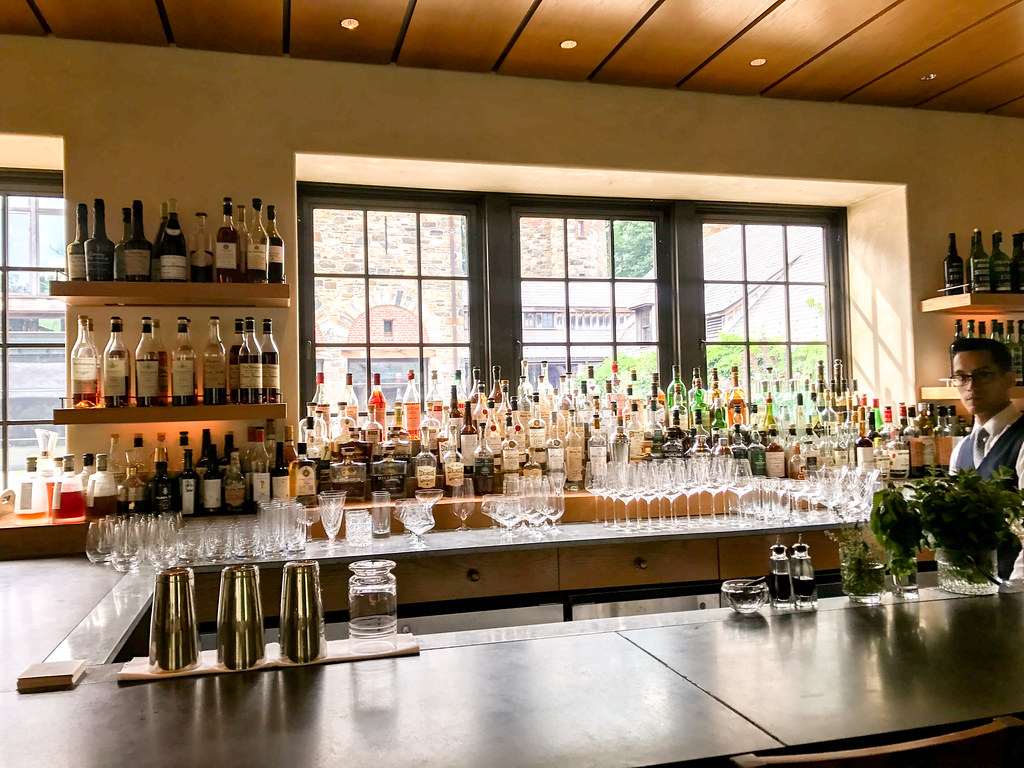
New York restaurant, Blue Hill, was one of the first to prioritize ultra-local sourcing. (Lou Stejskal)

New York restaurant, Blue Hill, was one of the first to prioritize ultra-local sourcing. (Lou Stejskal)
In U.S. restaurants, 22 to 33 billion pounds of food is wasted each year. Worldwide, our food system is responsible for 30% of carbon emissions. Taking these two facts into account, it is obvious restaurants have a negative impact on the environment.
However, restaurants are putting climate change on the menu. Industry leaders are transitioning their restaurant operations to be more sustainable and climate friendly. Here are 5 ways they’re doing it.
Renewable Energy
Restaurants are converting their spaces into sustainable buildings. Azurmendi, a three-Michelin-star restaurant in Spain and two-time Sustainable Restaurant Award winner, uses solar panels for electricity and uses geothermal energy for indoor climate control. Root Down, a sustainably focused restaurant in Denver, is run entirely on wind power. Nomad an ultra-local restaurant in Australia operates off of solar energy and is a solar panel host site for the community.
The shift to renewable energy is not exclusive to high-end restaurants. McDonald’s opened a new net zero energy restaurant, the first in their fleet of 36,525 locations, in July 2020 in Orlando, Florida. The new location is a first step in McDonald’s sustainability goals, including reducing greenhouse gas emissions by 36% by 2030.
Sustainable Sourcing
The farm-to-table phenomenon that became popular in restaurants over the past few years has been crucial to kick-starting a wave of restaurant sustainability. Local, farm-to-table produce emits less carbon, as there is less transportation necessary to deliver it. Amber in Hong Kong, the Sustainable Restaurant Award 2020 winner, specializes in ultra-local, hyper-seasonal selections on their menu. Their menu is up to 50% plant-based and they’ve removed all dairy from their dishes.
Blue Hill, a New York based restaurant, was one of the first to prioritize ultra-local sourcing and foster relationships with the farmers they work with. By seasonally changing menus and sourcing produce and meat products from local, sustainably operated farms, restaurants can greatly reduce their carbon footprints.
Recycling
We can all do our part by recycling. We all know the saying: “Reduce, Reuse, Recycle.” Restaurants are using recycled paper products, recycled water, and recycled furniture. Relae in Denmark, winner of the Sustainable Restaurant Award 2019, recycles wherever possible. From reusing empty wine bottles to serve their in-house filtered water, to using recycled furniture and wearing sustainable-fabric aprons, Relae works tirelessly to employ sustainability in all aspects of their operations.
Founding Farmers in Washington, D.C., uses recycled materials in a similar way. From recycled paper-composite counter tops, to recycled paper menus and recycled wood furnishings, the restaurant group prioritizes sustainability in all nine of their locations.
Circular Economy and Community Involvement
Many restaurants engage in circular economies and community involvement, which helps their communities and involves locals in sustainability efforts. Septime in Paris sources all of their produce from French farmers, and works with those farmers to save seed varieties and plant species. Mil, a restaurant nestled in the Andes Mountains of Peru, fosters close relationships with local communities and the farmers they source from, ensuring that farmers receive 50% of harvest profits. Woodberry Kitchen, a Baltimore restaurant, repurposes oyster shells and returns them to Chesapeake Bay to regenerate oyster beds.
Zero Food Print
Zero Food Print is an organization that enables farmers to practice carbon farming. Carbon farming is a method that restores soil biology, which then pulls carbon out of the atmosphere, reviving the soil and replenishing nutrients. Zero Food Print restaurants contribute a few cents per meal to helping farmers implement carbon farming through grants from the organization’s Restore programs. According to Professor Rattan Lal at Ohio State University, “A mere 2% increase in the carbon content of the planet’s soils could offset 100% of all greenhouse gas emissions going into the atmosphere.”
As restaurants prioritize sustainability, they are supporting local farmers, reducing their impact on the environment, and making an impact on their guests. By continuing to put climate change on the menu, restaurants will be a key player in the fight against climate change.